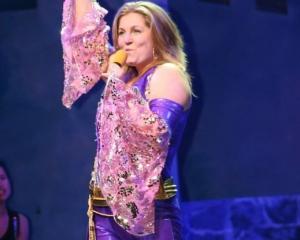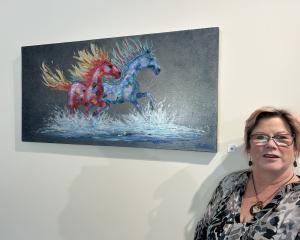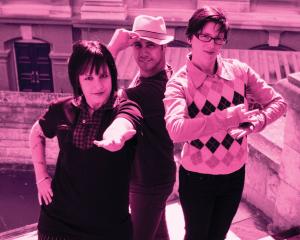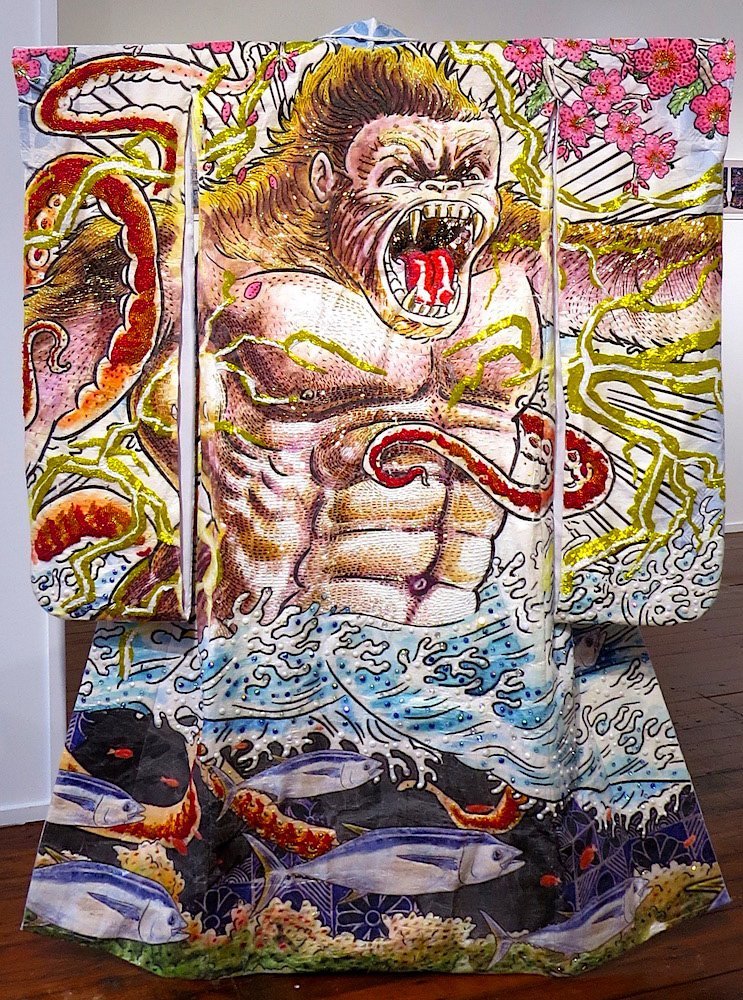
(Milford Gallery)
Yuki Kihara continues and completes her "Song About Samoa", a series of narratives presented in several sets beginning in 2019.
In the last two parts, "Taiheiyō (Pacific)" and "Tūlī's Flight", Kihara uses the imagery of Japanese cult science fiction and migratory birds to explore the interconnectedness of human activity with specific focus on the geopolitics of neo-colonialism, industry and pollution.
As with the earlier parts of the "Song", the artist's Samoan and Japanese heritage is invoked by formal kimonos constructed from siapo cloth. On this ground, the artist has created two panoramas. In the first, the film King Kong vs Godzilla is used as an analogy for the devastation caused by the 2011 tsunami and subsequent leak of radioactive material from the Fukushima power station. In the second series, the migratory flight of plovers is paralleled by the flight of aircraft, and can also be seen as an analogy for early Polynesian voyages of discovery. All are shown over a stylised map on which the lurid green glow of radioactivity is seen following the birds' flight.
Across the series, we are shown, though the medium of beautifully created and painted costumes, the fragility of the environment and the often blase way in which it is treated by government and industry.
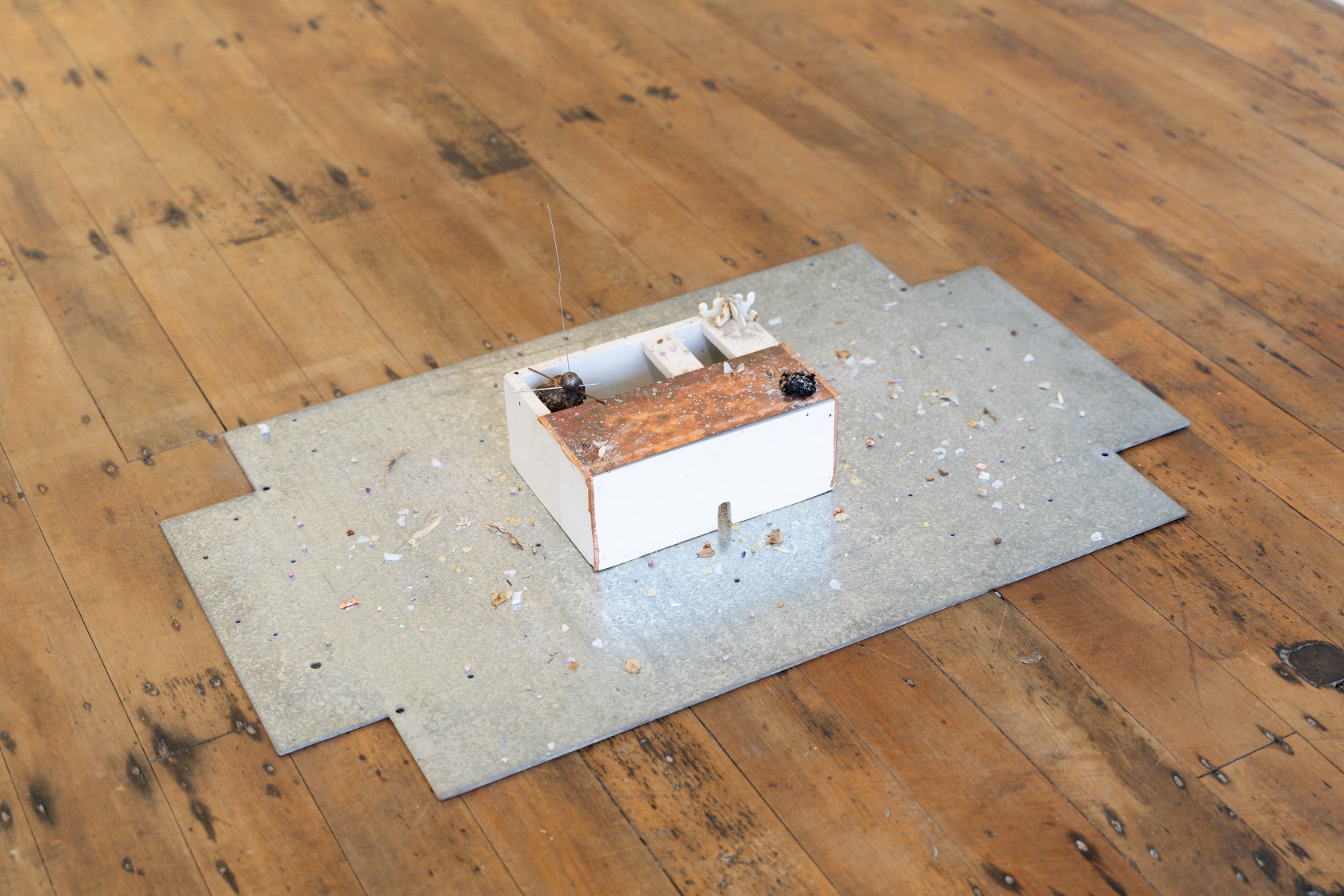
(Blue Oyster Gallery)
Humans are surface dwellers. When we look around us, we pay no thought for the land on which we stand other than the visible top layer. Yet the land extends deep below our feet, carrying its stories of the aeons of geologic time and the subterranean human infrastructure which keeps our cities running.
These unheeded stories are the focus for Soda Ash, a love poem to the basalt and salt water that makes up our environment in Dunedin, the constant erosion and shifting of the land via wind, rain and river.
Ed Ritchie's exhibition explores these movements and solidities through a series of constructions, each of which reflects on Otago Harbour's fiery birth and its subsequent gradual erosion into softer, more friendly landscape. The various installations also consider human action, specifically in the form of the many pipes and cables which run under our feet.
Works are created from materials such as cobalt chloride test paper, used in checking for leaks from water mains, and in one work, Painting a Drain, a porthole-like drain mouth is paired with a natural symbol (a feather) and a symbol of pollution (a burnt tyre). One notable work, Fertiliser, has been constructed from matches and then deliberately burnt, leaving the work as an analogy of the process of creation of the land.
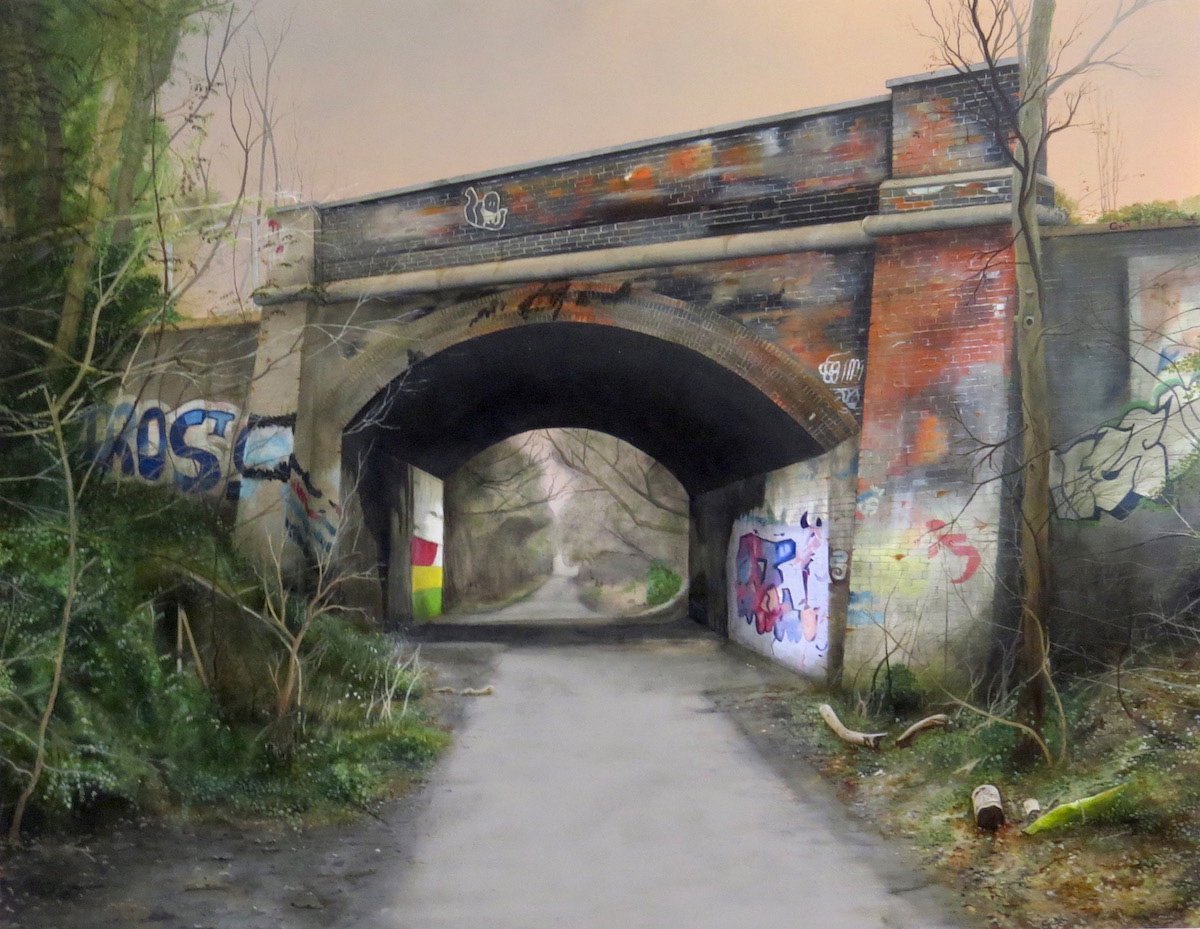
(The Artist's Room)
With many galleries, the Christmas/Summer break is a time to showcase the artists for whom the gallery is a primary commercial outlet. Such is the case with the exhibition currently on show at The Artist's Room.
Such exhibitions are not a bad thing, as they give galleries a chance to ease new artists into their exhibitions as part of a group also containing known drawcards.
The Artist's Room's summer show introduces several artists who are less known in Dunedin — albeit some of them well-known elsewhere. The glowing abstract discs of Hollie O'Neill, created in epoxy over mirror or aluminium are among these, as is the magic realism of Heather Denison's animal scenes. Harriet Millar's hypnotic coloured pencil work and some haunting urban scenes from Zoe Marsden also make a strong impression.
Urban scenes are also a trademark of Sam Foley, one of several of The Artist's Room's more established artists with work on display. There are also soft, shifting landscapes from Inge Doesburg and a powerful horse image from Julie Greig. More subdued, but charming, is a small mezzotint by Kyla Cresswell. A special mention must also go to Anne Stewart's stunning photograph of a kiwi chick, and to Bridget Morrison's bull, Bernie, whose surly gaze follows visitors as they move around the gallery.
By James Dignan

